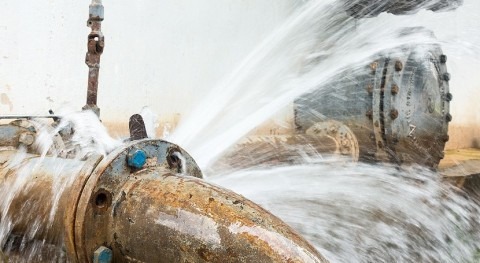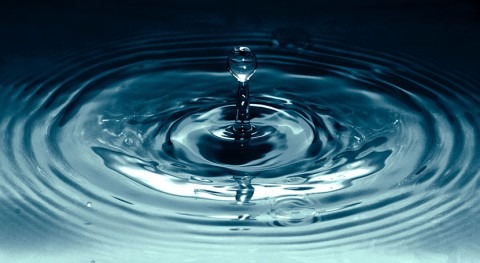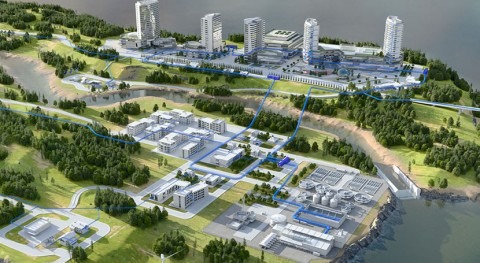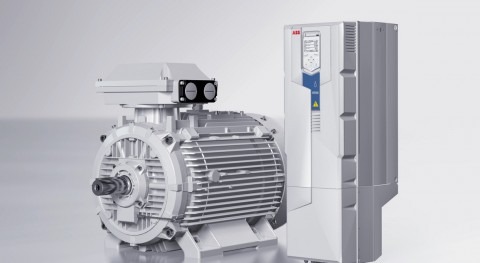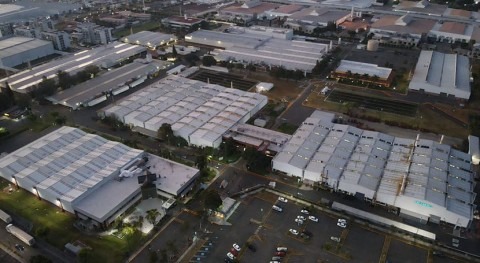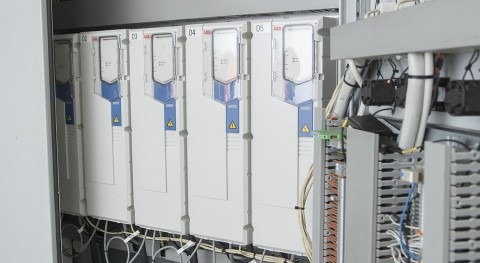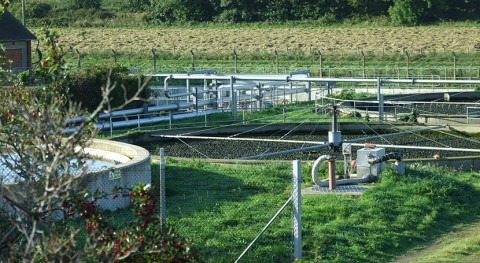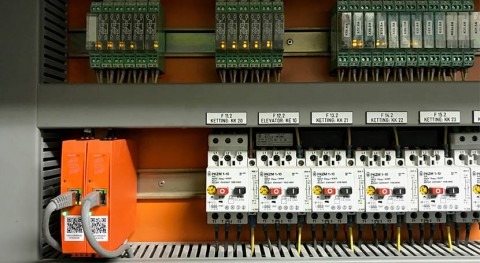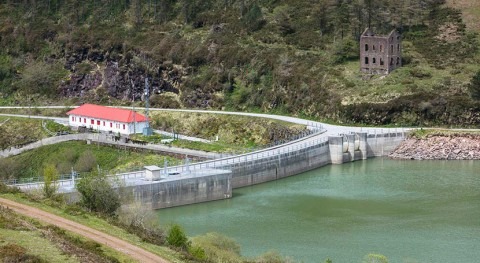Frequency converters offer significant energy efficiency and advantages in terms of the performance of pumps and blowers used in water treatment plants. However, converters, together with other electronic devices, can introduce harmonic distortions into the power line, causing certain disturbances: equipment can operate intermittently or prematurely fail. Fortunately, we have solutions, including ultra-low harmonic (ULH) drives that can mitigate the impact of harmonics at the source.
What are harmonics?
Utilities would like for alternating current (AC) supplied to water treatment plants to be a pure sine wave. The frequency of the wave will be 50 or 60 hertz (Hz), depending on where you are in the world. However, in real world facilities, we can see that the waveform of the voltage and current waves varies significantly, presenting distortions. This is due to the presence of harmonics that pollute the waveform. Harmonic pollution is described as a multiple of the base frequency, that is, the second harmonic of 50 Hz is 100 Hz, the third harmonic is 150 Hz, and so on.
In the water industry, frequency converters are one of the pieces of equipment that can be a source of harmonic distortion
It is important to clarify the difference in the disturbances caused by the presence of harmonics and the impact of radio frequency interference (RFI). RFI is usually found in frequencies above 150 kilohertz (kHz), whereas harmonics are a problem with lower frequencies, usually below 3,000 Hz.
The total harmonic distortion (THD) is a measure used to indicate the impact of harmonics. It is a per cent based on the proportion between the harmonic content RMS (root mean square) and the RMS value of the fundamental frequency. The THD value increases as the level of harmonics increases. In an ideal situation, with no harmonics, the THD would be 0%.
Where do harmonics come from?
Probably any non-linear load which does not consume a sinusoidal intensity of the power source generates harmonics. Some examples of non-linear loads are uninterruptible power supplies (UPS), computers, fluorescent lamps and other electronic devices that include a power source. The most significant thing for the water industry is that frequency converters are one of the pieces of equipment that can be a source of harmonic distortion.
What type of disturbances does harmonic distortion cause?
Harmonic distortion can lead to many different problems in water treatment plants, including:
- Premature failure and shortened service life of equipment. Specific overheating problems can occur in motors, transformers, cables, automatic switches and fuses.
- Switches and fuses can trip, with no apparent cause.
- Unstable functioning of back-up generators.
- Flickering lights.
In general, harmonics can have an important economic impact on the plant's service life, particularly as equipment has to be over-dimensioned to address harmonics, or investments made in measures to mitigate them.

Energy plant beside a waste water treatment plant
How can we deal with harmonics?
The traditional way of dealing with harmonics is to design oversized critical infrastructure, including increasing the size of transformers and cables to control overheating caused by the added harmonics intensity. A usual way to tackle the problems caused by the presence of harmonics is to increase the size of back-up generators.
What specific measures are there to mitigate harmonics from frequency converters?
Installing devices that generate less harmonics can be a more attractive and cost-effective option than investing in over-dimensioning equipment. The harmonics introduced by converters can be mitigated with a series of measures, or through the equipment design itself. Let us see the options we have:
- 6-pulse converter, no reactance: Standard 6 pulse converters, with no harmonics mitigation are used because they are less expensive and occupy less space. However, usually these converters have an intensity distortion value between 90 and 120%.
- 6-pulse converter, reactance from 3 to 5%: It is possible to reduce the levels of harmonic intensity up to 35-45% just by adding a DC reactance to the intermediate AC circuit at the converter's input, in order to increase the standard 6-pulse converter's impedance.
- Passive filters: A passive filter solution is added to the power line of the converter. In current designs, it consists of an inductor-capacitor-inductor adjusted for a specific harmonic frequency. Usually the use of a passive filter in a frequency converter will reduce the intensity of distortion to levels between 5 and 10% at full load.
- Active filters: An active harmonics filter (AHF) works like noise cancelling headphones. The AHF measures the intensity distortion and then supplies an opposite waveform to offset the distortion. It can be a very effective way to mitigate harmonics, that usually leads to harmonic intensity distortion levels between 4 and 7%.
- Multi-Pulse solutions: The standard converter is a 6-pulse model. The low voltage multi-pulse configurations are usually 12 or 18-pulse designs. There are also designs with 24 pulses or more, but those are usually found in medium voltage converters. If installed in an appropriate and balanced energy network, the intensity of distortion caused by an 18-pulse frequency converter is 5 or 6%. The intensity of distortion of a 12-pulse converter ranges from 10 to 12%.
Harmonics can have an important economic impact on the plant's service life, particularly as equipment has to be over-dimensioned
ULH drives offer an active front
The most advanced solution to mitigate harmonics for converters is an active front end model (AFE). In this design, the rectifier has insulated gate bipolar transistors (IGBT) instead of diodes. The AFE converter also has an LCL filter (inductor-capacitor-inductor) integrated. The IGBT based rectifier enables the converter to generate an almost pure sinusoidal intensity. The LCL filter contributes to eliminating the high frequency noise generated by the IGBT commutation.
AFE converters are also known as ULH (ultra low harmonics) because the intensity of distortion is between 3 and 5%.
Currently, ULH drives offer the most compact solution to achieve distortion below 5%. Another advantage of ULH drives is that they have a unity power factor, so they consume the lowest possible reactive power. ULH drives have an excellent response to harmonics with partial loads and are easy to install as an independent and compact component of the equipment.

ACQ580 drive
The power factor is also important
Besides considering harmonics, it is essential to take into account the power factor. It is a common measurement in electric engineering to determine how effective is an electric network using the energy that it takes from the grid. There are three types of power factors: the real power factor, the displacement power factor and the distortion power factor.
Designers and plant managers should consider three important issues related to the power factor:
- Utilities may charge extra to plants with poor power factors, whereas they may offer a reduction in electricity bills to those plants with a good power factor.
- It is possible to improve the real power factor adding a frequency converter to a motor.
- The real power factor is also related to the impact of harmonics from the converter. Those converters that generate less harmonics will improve the real power factor in comparison with converters with a higher harmonics impact.
The reliability of a plant can improve by paying attention to converters' harmonics
In summary, the harmonics generated by frequency converters can cause significant problems in water treatment plants leading to inefficiency, low reliability and possibly a loss of production. Installing solutions to mitigate harmonics will result in a return on the investment thanks to enhanced reliability and a longer service life of equipment. The new generation of ULH drivers is a particularly attractive solution that can mitigate harmonics at the source.





